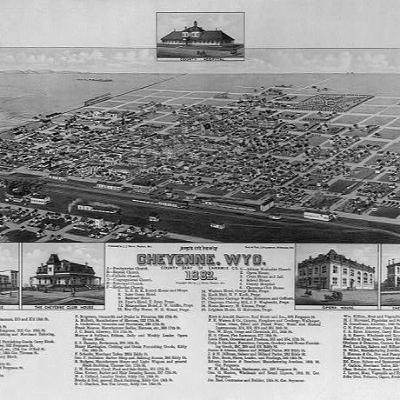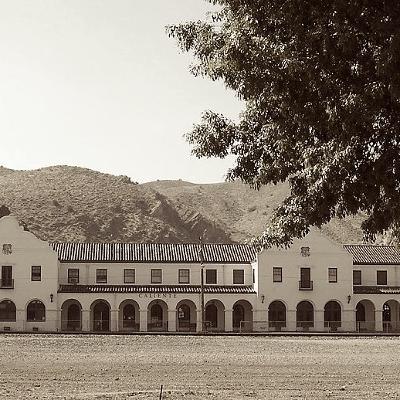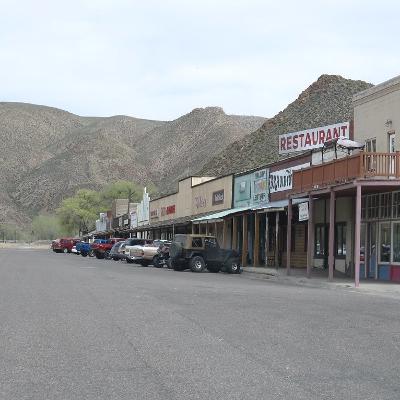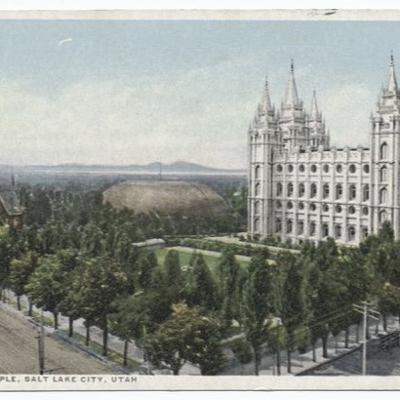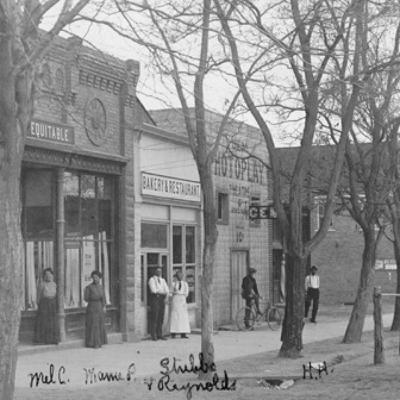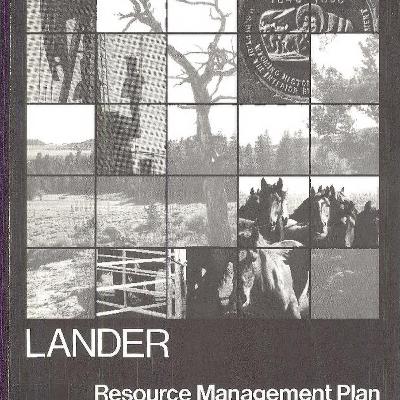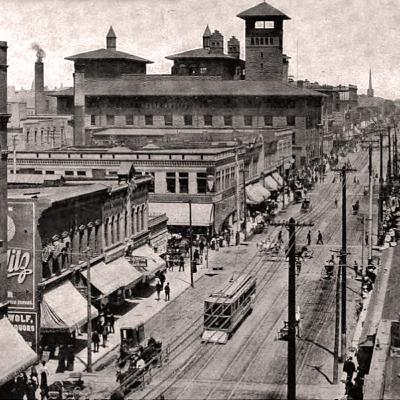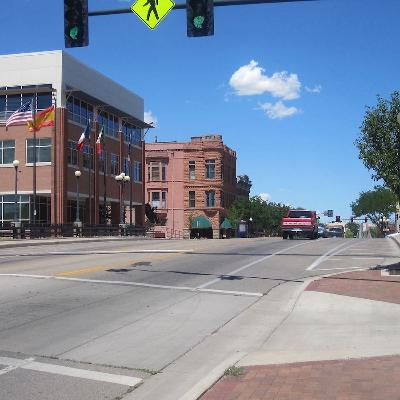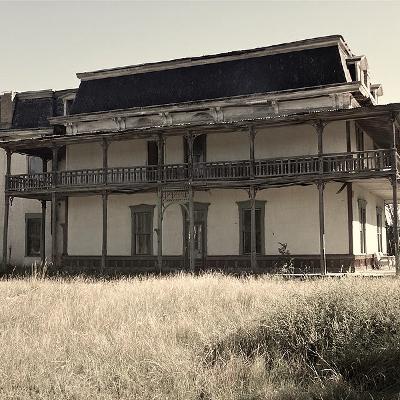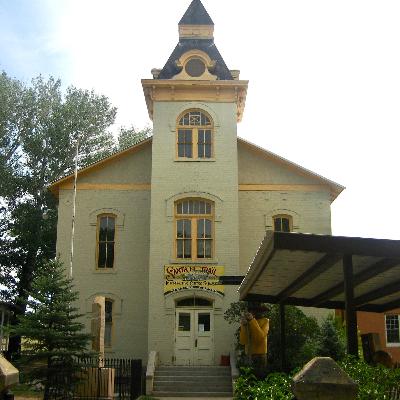7.2 - Cheyenne, WY History: powered by the rapid development of the cattle industry
Update: 2021-01-31
Description
CHEYENNE, WY: THE GREAT AMERICA OF 1867-1887
The time when Cheyenne was “great” was the years between 1867 and 1887, the years of the cattle boom in Wyoming. Though much has happened since then, Cheyenne continues to celebrate this era and Wyoming’s branding as “The Cowboy State” remains central to Wyoming’s identity as a state.
It is important to understand that the American cowboy, and the cattle industry as we know it, has its origins in Mexican-American traditions in the states along the southern border, but the image of the cowboy in popular culture owes much to the works of author Owen Wister, who is credited with creating the western as a literary genre. Though he set his writings in various places around the west, his two most famous and endearing novels, Lin McLean (1897) and The Virginian: A Horseman of the Plains (1902) took place in, and were based on first-person accounts of, Wyoming during the cattle boom. Together with his illustrators, Charles M. Russell and Frederic Remington, two other great American mythmakers, Wister had helped secure a special place for the Wyoming cowboy in the popular imagination.
The origins of the Wyoming cowboy, the beginnings of the cattle boom and the genesis of the city of Cheyenne all happened at the same time. In 1867, the Union Pacific railroad laid track across what would become Wyoming Territory and established a railroad depot at Cheyenne. Within two years, the so-called “Magic City of the Plains” was home to 200 businesses, had a population of 4000 people and was the capitol of the new territory.
This growth was powered by the rapid development of the cattle industry. Though there was some ranching in the area since the 1850s, it suffered from lack of access to markets. The railroad not only addressed this problem, it also brought investors from the Eastern States and Britain. This ushered in the era of huge, heavily capitalized cattle operations. It seemed, for a time, that no one could lose money in the cattle business.
Cattlemen dominated politics. In 1879, the Cheyenne Club was established in an ostentatious building which nearly dwarfed the territorial capitol. This became the premier gathering place for the biggest players in the cattle industry, and functioned as some ways as a “third house” of the territorial legislature where deals would be made over liquor, cigars and oysters.
While this arrangement worked very well for a small number of cattlemen backed by Eastern and foreign financiers, it excluded many Wyoming residents. In their quest to monopolize land and water resources, the heavily capitalized large cattle operations were engaged in conflicts, sometimes violent, around the territory with sheepherders, farmers, and small-time ranchers.
Another excluded group seems a little ironic. Though the city was named Cheyenne, the tribe would not be a part of the life of the community. In the 1870s United States was actively at war with the Cheyenne and other plains tribes and the army was initially the primary market for beef.
Beyond this, a lot of people got written out of the mythmaking of the period. Though a significant number of cowboys were African-American or Native American, and Mexican-Americans worked the initial cattle drives to Wyoming from Texas, these were not the men elevated by Wister. The author considered the Anglo-American cowboy to be a paragon of the nation’s values and dismissed others with words like “mongrel.” His heroes were White, Anglo-Saxon and Protestant, and this shaped the popular notion of the cowboy in Wyoming and beyond.
The cattle boom came to an abrupt end in 1887. The number of cattle both exceeded market demand and the capacity of the range to support them. The final blow was a particularly severe winter in 1887. The Cheyenne Club was soon abandoned. Though the industry survived, it was no longer dominant in the same way.
-Tom Prezelski, Resident Historian
The time when Cheyenne was “great” was the years between 1867 and 1887, the years of the cattle boom in Wyoming. Though much has happened since then, Cheyenne continues to celebrate this era and Wyoming’s branding as “The Cowboy State” remains central to Wyoming’s identity as a state.
It is important to understand that the American cowboy, and the cattle industry as we know it, has its origins in Mexican-American traditions in the states along the southern border, but the image of the cowboy in popular culture owes much to the works of author Owen Wister, who is credited with creating the western as a literary genre. Though he set his writings in various places around the west, his two most famous and endearing novels, Lin McLean (1897) and The Virginian: A Horseman of the Plains (1902) took place in, and were based on first-person accounts of, Wyoming during the cattle boom. Together with his illustrators, Charles M. Russell and Frederic Remington, two other great American mythmakers, Wister had helped secure a special place for the Wyoming cowboy in the popular imagination.
The origins of the Wyoming cowboy, the beginnings of the cattle boom and the genesis of the city of Cheyenne all happened at the same time. In 1867, the Union Pacific railroad laid track across what would become Wyoming Territory and established a railroad depot at Cheyenne. Within two years, the so-called “Magic City of the Plains” was home to 200 businesses, had a population of 4000 people and was the capitol of the new territory.
This growth was powered by the rapid development of the cattle industry. Though there was some ranching in the area since the 1850s, it suffered from lack of access to markets. The railroad not only addressed this problem, it also brought investors from the Eastern States and Britain. This ushered in the era of huge, heavily capitalized cattle operations. It seemed, for a time, that no one could lose money in the cattle business.
Cattlemen dominated politics. In 1879, the Cheyenne Club was established in an ostentatious building which nearly dwarfed the territorial capitol. This became the premier gathering place for the biggest players in the cattle industry, and functioned as some ways as a “third house” of the territorial legislature where deals would be made over liquor, cigars and oysters.
While this arrangement worked very well for a small number of cattlemen backed by Eastern and foreign financiers, it excluded many Wyoming residents. In their quest to monopolize land and water resources, the heavily capitalized large cattle operations were engaged in conflicts, sometimes violent, around the territory with sheepherders, farmers, and small-time ranchers.
Another excluded group seems a little ironic. Though the city was named Cheyenne, the tribe would not be a part of the life of the community. In the 1870s United States was actively at war with the Cheyenne and other plains tribes and the army was initially the primary market for beef.
Beyond this, a lot of people got written out of the mythmaking of the period. Though a significant number of cowboys were African-American or Native American, and Mexican-Americans worked the initial cattle drives to Wyoming from Texas, these were not the men elevated by Wister. The author considered the Anglo-American cowboy to be a paragon of the nation’s values and dismissed others with words like “mongrel.” His heroes were White, Anglo-Saxon and Protestant, and this shaped the popular notion of the cowboy in Wyoming and beyond.
The cattle boom came to an abrupt end in 1887. The number of cattle both exceeded market demand and the capacity of the range to support them. The final blow was a particularly severe winter in 1887. The Cheyenne Club was soon abandoned. Though the industry survived, it was no longer dominant in the same way.
-Tom Prezelski, Resident Historian
Comments
In Channel

